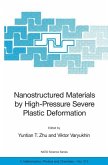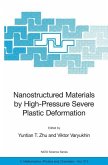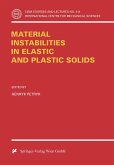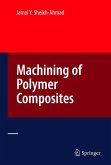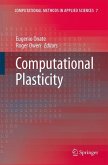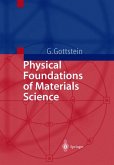The purpose of this book is to serve as both an introductory course on the nanomechanics of deformed nanostructures and as a monograph providing a systematic overview of the current state of the art concerning the structure and deformation behavior of nanocrystalline materials. It is primarily concerned with up-to-date theoretical concepts and key experimental data on defects and plastic deformation processes in nanocrystalline matter. This book focuses on a very hot topic within materials science, and one that is both of great fundamental interest and of crucial importance for a wide range of nanotechnologies that rely on the unique mechanical properties of nanocrystalline materials.
It seems there is no special need to comment on the term 'nanostructure' now, when one often meets the 'nano' words not only in scientific journals but even in newspapers. Moreover, today they are even to be heard in TV and radio programmes. In academic science, where the terms 'nanostructure' and 'nan otechnology' have been extremely popular since the early 1990s, they have been successfully extended to the sphere of economics and business, and now to politics. This is quite natural because nanostructures and nanotechnolo gies will surely serve as a basis for the most advanced and highest technology production in the nearest and probably also the remote future. Hence, the struggle to create and occupy its markets is already under way. In this respect, it is of great interest to review data on the dynamics of U. S. Federal Goverment expenditure for nanotechnology [1,2]. In the fiscal years 1997 and 2002, expenditure was approximately US$116 and US$ 697 million, respectively. In the fiscal year 2004, the President's request for US federal in vestment in nanoscale science, engineering and technology is about US$ 849 million [2]. The indicative budget allocated to the Thematic Priority enti tled 'Nanotechnologies and nanosciences, knowledge-based multifunctional materials and new production processes and devices' for the duration 2002- 2006 of the sixth EU Framework Programme for Research and Technological Development is EUR 1300 million [3].
It seems there is no special need to comment on the term 'nanostructure' now, when one often meets the 'nano' words not only in scientific journals but even in newspapers. Moreover, today they are even to be heard in TV and radio programmes. In academic science, where the terms 'nanostructure' and 'nan otechnology' have been extremely popular since the early 1990s, they have been successfully extended to the sphere of economics and business, and now to politics. This is quite natural because nanostructures and nanotechnolo gies will surely serve as a basis for the most advanced and highest technology production in the nearest and probably also the remote future. Hence, the struggle to create and occupy its markets is already under way. In this respect, it is of great interest to review data on the dynamics of U. S. Federal Goverment expenditure for nanotechnology [1,2]. In the fiscal years 1997 and 2002, expenditure was approximately US$116 and US$ 697 million, respectively. In the fiscal year 2004, the President's request for US federal in vestment in nanoscale science, engineering and technology is about US$ 849 million [2]. The indicative budget allocated to the Thematic Priority enti tled 'Nanotechnologies and nanosciences, knowledge-based multifunctional materials and new production processes and devices' for the duration 2002- 2006 of the sixth EU Framework Programme for Research and Technological Development is EUR 1300 million [3].
From the reviews: "The authors have been guided by a sincere desire to consider different ideas and present their own view on this topic. ... The book concludes with a list of 464 references which will play a dominant role in helping the researchers during the completion of a project or help in initiating a research study on a particular topic. For many a reader the rewards may be immense. ... Research libraries devoted to materials science collection will find this book in constant demand." (Current Engineering Practice, Vol. 47 (3), 2004 - 2005)


